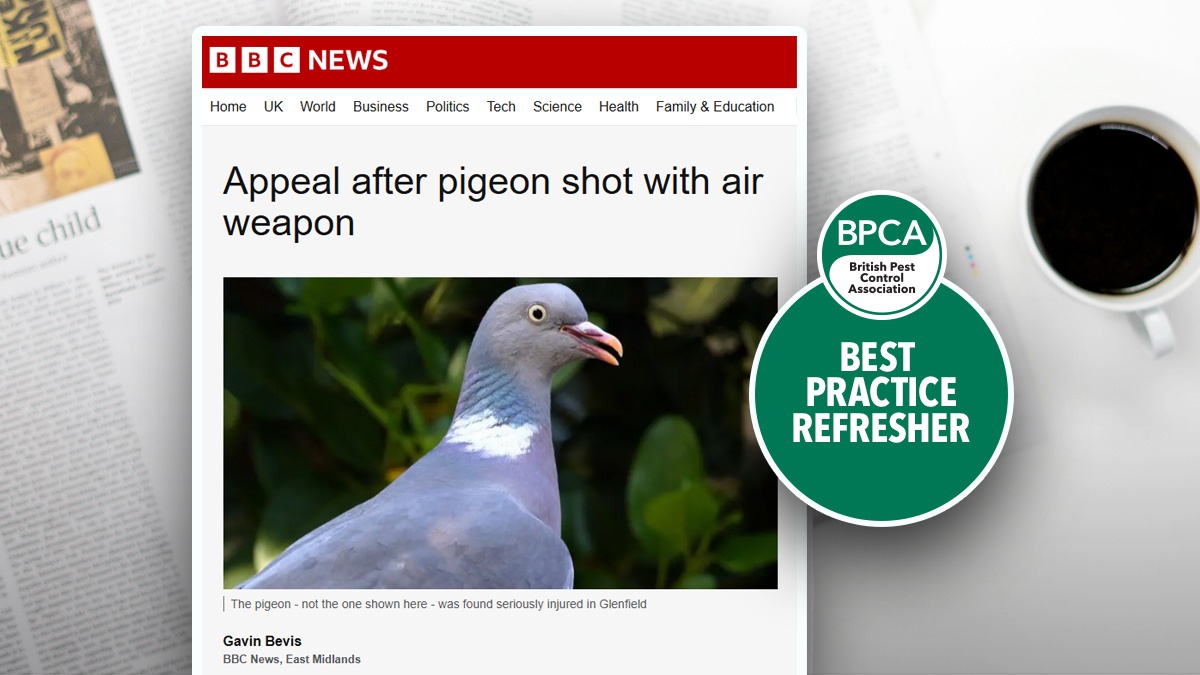BEST PRACTICE
You may have been made aware that the BBC reported an incident where a pigeon was found seriously injured in Glenfield, Leicestershire, having been shot with an air gun.

While there’s no indication that pest management professionals were involved in the news story, we thought it would be a good idea to provide a quick air gun safety refresher for anyone carrying out pigeon management.
A reminder for pest management professionals
As professional pest managers, it’s vital to ensure that any bird control work you carry out is done lawfully and humanely. Most work in England falls under General Licence GL41 – ‘Take or kill for public health and safety’ – although each devolved nation has its general licences.
You can find a table of these in the Member Library (log in required).
Key points to remember:
Exhaust non-lethal methods first
Under the general licence, lethal control can only be used if alternative lawful methods are impractical, ineffective or disproportionate.
Dispatch humanely
If lethal control is required, it must be quick and humane in a single swift action. If this isn’t possible, apply an appropriate handheld dispatch tool where it’s safe to do so.
Ensure competence and equipment standards
Training and demonstrated competency are essential. Keep your equipment regularly serviced and in good working condition.
Document everything
Robust records are critical if the use of lethal force is ever challenged. Documentation should include:
- Actions taken to comply with licence conditions
- Reasons why no satisfactory alternative was available
- Dates, locations, species and purpose for control
- Methods used for dispatch
- Number of birds taken or nests/eggs destroyed.
Keep these records for at least three years and be ready to produce them on request.
Further reading and support
If you’re unsure about compliance, check the BPCA Codes of Best Practice or contact our Technical team for guidance.
COBP - The Use of Air Guns in Pest Control
COBP - Bird Management and Control
Source: